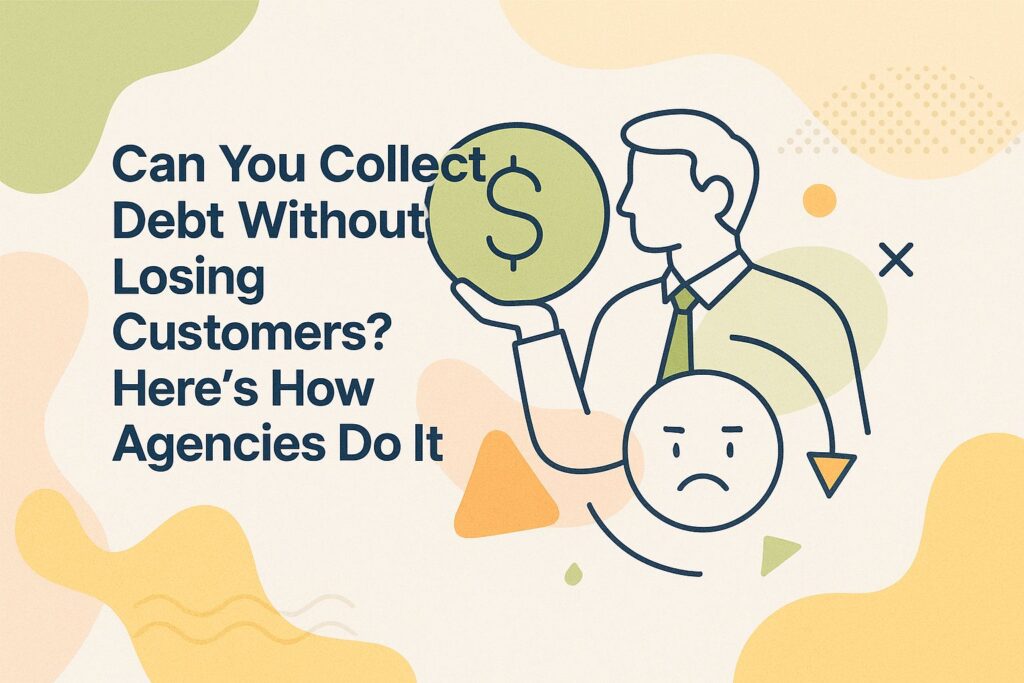
Can You Collect Debt Without Losing Customers? Here’s How Agencies Do It
Collecting debts can be done without losing important customers. You can find a way to recover money owed to you while keeping good relationships intact. This is important because customer loyalty is key to your business success. Find out how effective communication, flexible plans, and the right technology can help you collect debts without causing customer dissatisfaction. Ready to learn the secrets agencies use to achieve this balance? Let's dive in.
Overview of Debt Collection Strategies
The debt collection process includes several steps: managing accounts, making follow-up calls, talking with clients, and using negotiation methods to recover unpaid amounts and improve client satisfaction.
To simplify this process, start with easy account management using tools like QuickBooks for financial management. This tool helps you monitor payments and create reports.
For follow-up calls, consider Dialpad, which offers great call management features, enabling you to organize and document conversations.
During the negotiation phase, apply active listening techniques alongside strategic offers to encourage timely payment.
Using an organized method improves productivity and strengthens client trust, which can lead to higher recovery rates and better financial stability. Related insight: Best Debt Collection Companies of 2025
Importance of Customer Retention and Loyalty
Keeping current customers is often five times less expensive than getting new ones, so having effective methods to keep them is important in debt collection.
To implement effective customer loyalty programs in debt collection, focus on these strategies:
- Start by tailoring your communication to show customers you recognize their specific needs. Use tools like CRM systems to track interactions.
- Second, offer flexible payment options, such as payment plans that can ease financial strain while ensuring continued engagement. Incentivize on-time payments with discounts or rewards, increasing the likelihood of retention.
According to research, implementing such strategies can improve customer retention rates by up to 60%, significantly enhancing overall profitability.
Understanding Customer Relationships
Knowing the details of customer relationships is key to successful debt collection because it directly impacts trust, negotiation, and conflict management results (our review of the best call center services addresses pivotal tools for managing these relationships).
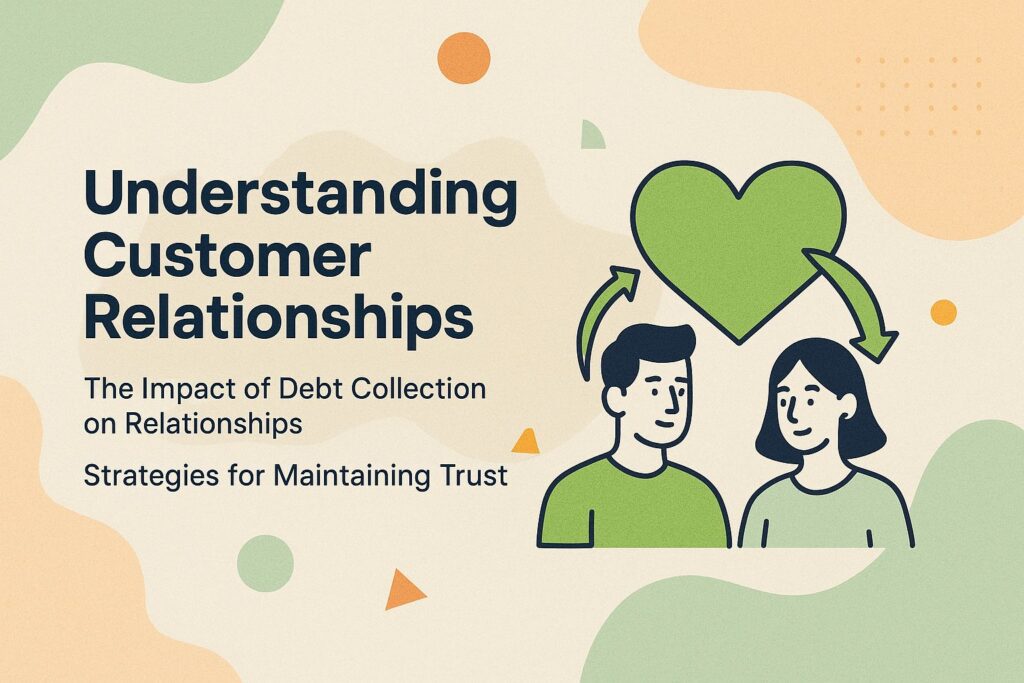
The Impact of Debt Collection on Relationships
How you handle debt collection can shape customers' opinions of your company and impact its reputation, which can affect future dealings and payment habits.
For instance, aggressive collection tactics, such as constant calls or threats, can lead to customer resentment and a loss of trust. In contrast, agencies that adopt empathetic approaches-like offering flexible payment plans or personalizing communication-often see improved retention.
One example is an agency that contacted clients frequently but kindly to discuss payment options, resulting in a 30% increase in payments received.
By prioritizing understanding and care instead of stress, companies can increase customer loyalty, improve recovery rates, and raise service quality.
Strategies for Maintaining Trust
Building trust during the debt collection process can be achieved through transparency, consistent communication, proactive outreach, and by offering customer-centric solutions.
- Start by providing clear debt documentation to clients, including itemized statements and payment history. Use clear and simple language to make sure consumers know what they need to do.
- Sending regular updates about account status through email or phone can help build trust and improve customer service. Implement a feedback mechanism, such as surveys, to gauge their experience and adjust your approach accordingly.
- Tools like SurveyMonkey or Google Forms are excellent for collecting this data. Combined, these methods create an environment of empathy and respect, greatly enhancing client relationships.
Effective Communication Techniques
Good communication methods are important in debt collection. They help agencies talk to customers, improve client engagement, and create a friendly environment.
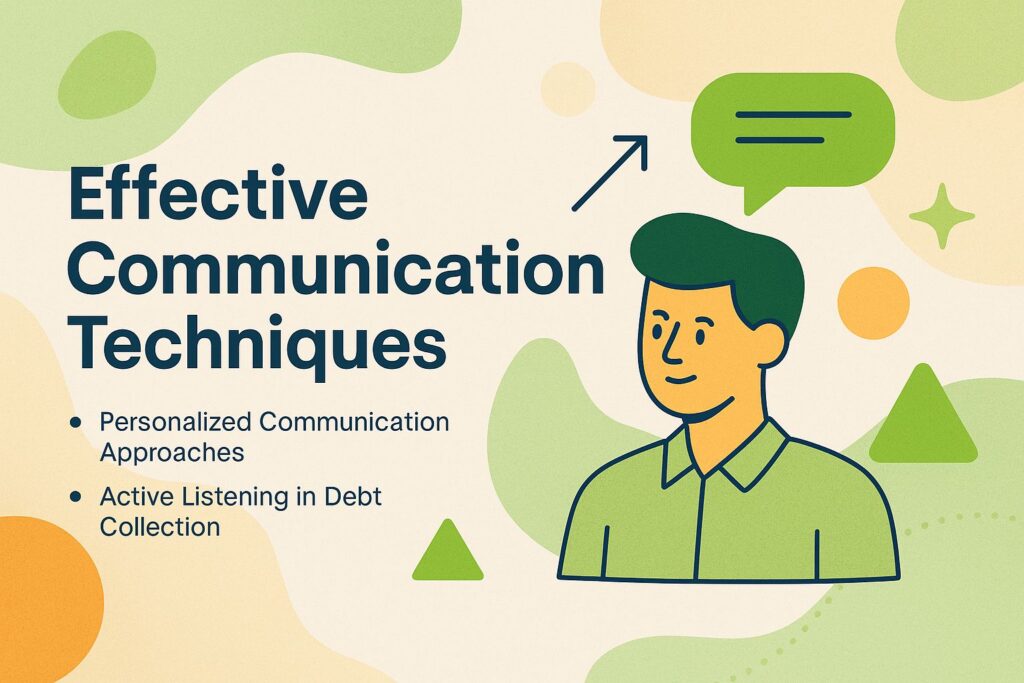
Personalized Communication Approaches
Adjusting communication to match each customer's profile can improve response rates and create a friendlier debt recovery process.
To achieve this, use CRM tools such as HubSpot. These tools allow you to monitor customer interactions, improve how you categorize customers, and separate your audience based on demographics or behavior.
For example, send custom emails that consider payment history. Begin with a friendly greeting and recognize their circumstances.
Develop follow-up strategies that vary in tone; for example, use a friendly reminder for those with a good track record and a more formal tone for others. This customized method can greatly increase participation and response levels.
Active Listening in Debt Collection
Practicing active listening during debt collection calls can significantly improve customer interactions and lead to more satisfactory negotiation outcomes.
To effectively employ active listening, start by paraphrasing the customer's concerns. For example, if a customer expresses frustration over late fees, you might say, ‘I understand that the late fees have been a source of stress for you.' This acknowledges their feelings.
Asking clarifying questions like, ‘Can you share more about your situation?' encourages dialogue. Going over the key parts of the call at the end helps make sure you remember them, and it makes the customer feel listened to and appreciated during the discussion.
Debt Collection Strategies and Customer Trust
Using good debt collection methods can improve recovery efforts and keep good customer relationships.
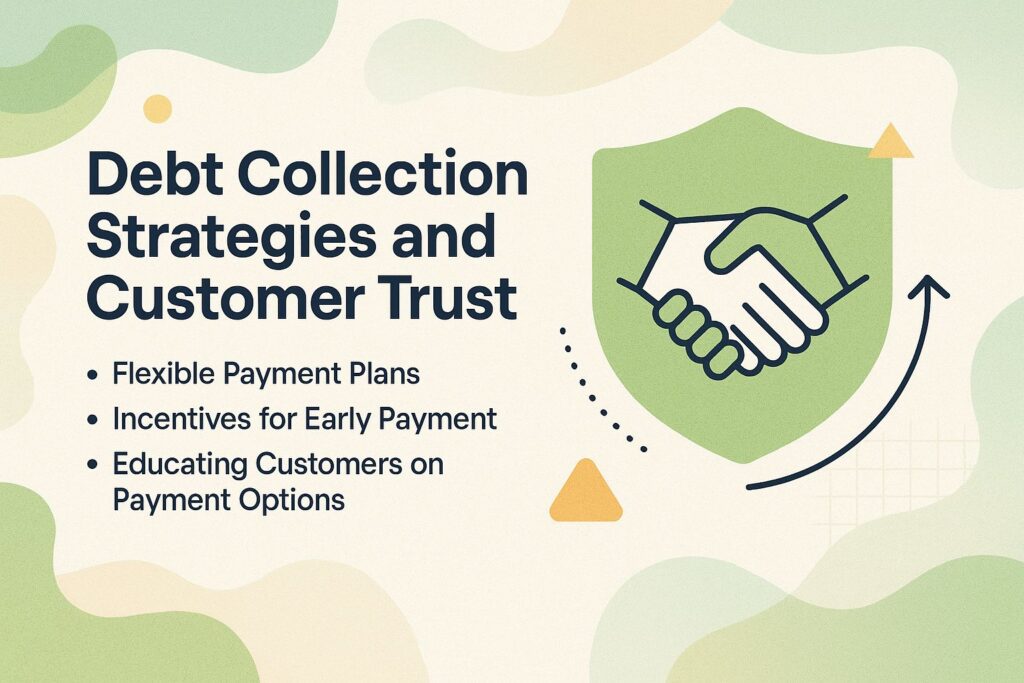
Flexible Payment Plans
Offering flexible payment plans can create win-win solutions for both customers and agencies, significantly improving the likelihood of debt recovery and financial health.
To create successful flexible payment plans, use tools like QuickBooks to monitor customer payment records and accounts receivable.
Start by analyzing payment behavior: customers who consistently pay on time may benefit from longer payment terms, while those with inconsistent patterns might need shorter, manageable installments. This method lowers the chance of not getting paid back and promotes quick payment.
Create a structured plan with clear terms-offer discounts for early payments or assess interest on delayed ones. Talk with clients often to make sure choices match their financial targets.
This individual method promotes timely payments and builds a good relationship with your clients.
Incentives for Early Payment
Incentivizing early payments can lead to quicker recoveries, strengthen customer loyalty, and improve business ethics, benefiting both parties in the long run.
To implement a successful incentive model, consider offering a 5% discount on invoices paid within ten days. For example, a client with a $1,000 invoice would pay just $950, creating a win-win scenario.
You could provide credits for early payments to encourage customers to return. Tracking participation through tools like QuickBooks or FreshBooks allows you to measure the effectiveness of your incentives.
Explaining these benefits clearly in your contracts and when bringing new customers on board can increase acceptance and their happiness.
Educating Customers on Payment Options
Teaching customers about their payment options helps them make informed decisions, making it easier for them to handle debt collection.
To effectively educate customers, consider hosting webinars that outline the available payment methods, deadlines, and potential consequences of delayed payments, enhancing financial literacy.
During these sessions, use real-life examples to show how different choices can affect their financial situation.
Provide informational pamphlets summarizing key points, which can be distributed via email or in-person meetings.
Being clear is important; explain any fees or terms linked to each payment option so customers know exactly what they are choosing.
Utilizing Technology in Debt Collection
Using technology in debt collection can make the process smoother and more effective, while still providing excellent customer service and enhancing transactional integrity. For those interested in understanding how top organizations implement these advancements, consider exploring our comparison of the best debt collection companies of 2025.
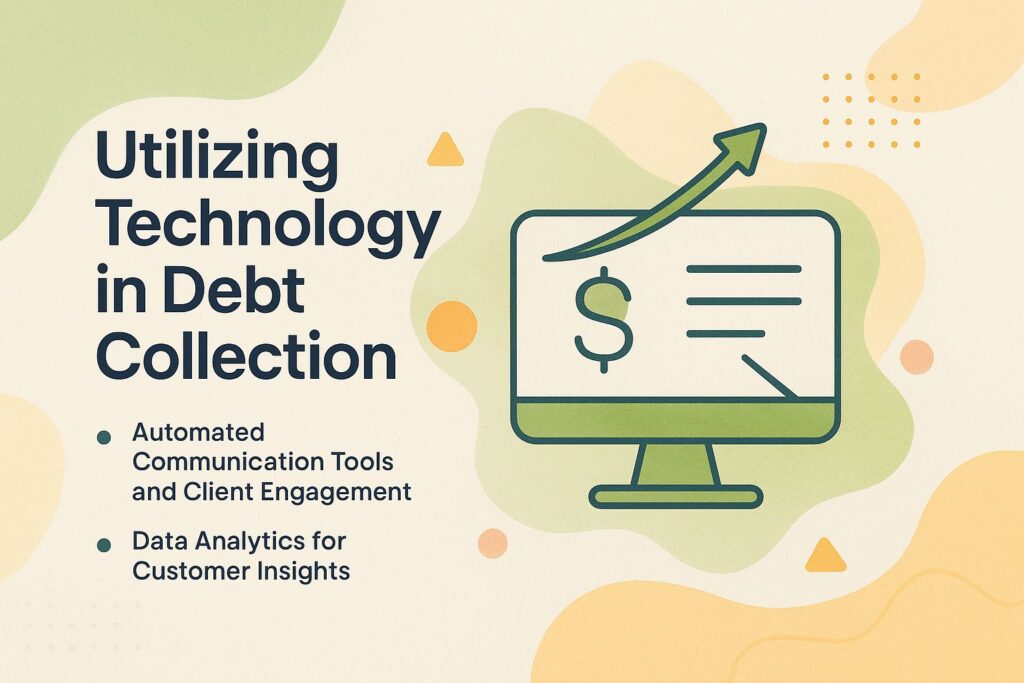
Automated Communication Tools and Client Interaction
In today's fast-changing business environment, tools that handle communication automatically are essential for improving how businesses stay connected with clients. As technology continues to change, keeping up with these tools ensures businesses can communicate quickly and clearly. These tools help companies respond promptly and manage client relationships effectively, making them a critical part of modern business operations. Embracing these tools allows businesses to maintain strong connections with their clients and keep up with the competition.
Automated communication tools allow agencies to manage a large number of debtors, ensuring that messages are timely and uniform.
Popular tools such as Mailchimp for emails and Twilio for SMS communications can be easily integrated into most agency workflows, improving communication tactics.
Mailchimp helps you set up scheduled email campaigns, focusing on particular groups with customized messages, which leads to higher engagement rates.
Twilio allows agencies to send payment alerts through SMS, which people often read more than emails.
These tools simplify communication, aiding agencies in maintaining a professional image and speeding up responses from debtors.
Data Analytics for Customer Insights
Using data analytics helps agencies understand how customers behave, which allows them to create specific strategies for collecting debts.
For instance, Google Analytics can track website interactions, revealing which pages lead to higher engagement or drop-offs. Coupled with a Customer Relationship Management (CRM) system like Salesforce, agencies can monitor individual customer histories and preferences.
By looking at this data, agencies can better plan when to contact people, like calling at times when users are most engaged. Grouping customers by their responses helps tailor communication, which increases collection success and keeps a good agency reputation.
Building a Positive Brand Image and Business Reputation
A good reputation is important in debt collection because it affects customer retention, repeat business, and how the business is viewed by others.
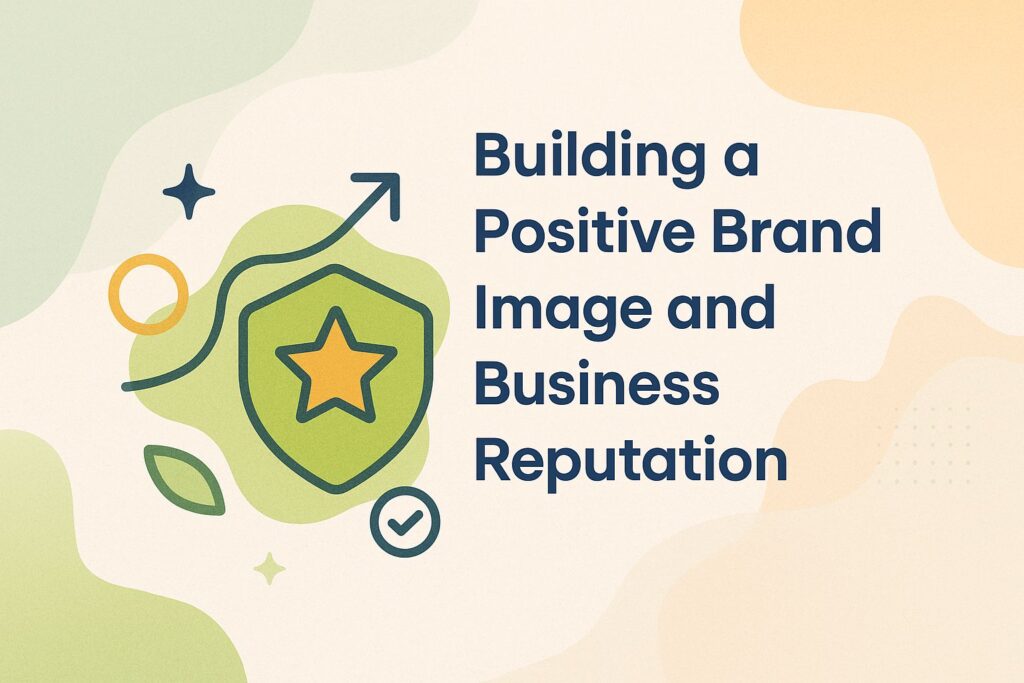
Transparency in Debt Collection Practices
Being open about debt collection practices builds trust and increases customer confidence in agencies. This is important for successful recovery efforts and minimizes negative impact.
Agencies should clearly explain fees, steps, and schedules to improve speed in collections.
For instance, an agency might provide clients with detailed fee structures in writing, ensuring no hidden charges; this can be facilitated by using simplified invoicing tools like QuickBooks.
Setting up a clear way for clients to challenge claims can build trust and facilitate dispute resolution. Agencies should keep in touch with clients regularly through email or portals like Slack to keep them updated on their case status, building trust and rapport.
Customer Feedback Mechanisms
Setting up ways to gather customer opinions can give helpful information that makes service better and builds stronger connections with customers, enhancing customer experience.
One effective method is to use tools like SurveyMonkey for post-interaction surveys, which allow you to collect structured feedback on customer experiences.
JotForm lets you create custom forms to gather particular details. It's important to often look at the data you have-this might mean using programs like Tableau to create charts and graphs.
The main thing is to use this feedback to improve your services. Show your customers you care about what they think, which can make them more loyal and happy.
Legal and Ethical Considerations
Knowing the legal and ethical rules in debt collection is important to prevent fines and keep a good brand reputation, safeguarding legal considerations. If you're unsure whether professional help is needed, learn more about key indicators that suggest your business might benefit from debt collection services.
Understanding Debt Collection Laws
Knowing debt collection laws, such as the FDCPA, can help agencies avoid legal problems and improve ethical behavior.
Key regulations to understand include the Fair Debt Collection Practices Act (FDCPA), which prohibits abusive practices, and the Fair Credit Reporting Act (FCRA), which governs credit reporting.
Non-compliance can lead to penalties such as fines up to $1,000 per violation or actual damages, plus attorney fees in lawsuits.
Agencies should set up training sessions on these laws, regularly review collection methods, and create clear instructions to respect consumer rights.
Using compliance software can help monitor and follow legal standards more easily, ensuring compliance and risk assessment.
Ethical Collection Practices
Using ethical methods to collect debts can improve customer relationships and increase the chances of getting money back, promoting a respectful way of handling repayments.
- Start by using clear and transparent communication methods, such as sending letters that outline repayment options and deadlines.
- Allow customers to talk about their financial needs freely and possibly provide payment plans that match their budgets.
- Using fair negotiation methods, such as offering a discount for paying early, can help build trust, enhancing debt negotiation.
- Regularly educate your team on ethical methods to create a respectful work environment, which leads to effective recovery results.
Summary of Key Strategies
Key strategies for improving debt collection efficiency include implementing flexible payment plans, utilizing technology, and maintaining transparency, promoting revenue recovery.
Flexible payment plans can significantly increase recovery rates. For instance, offering options like monthly installments can accommodate customers facing financial hardships, providing effective collection and financial solutions.
Using tools like automatic notifications in CRM systems like HubSpot or Salesforce makes communication easier and prevents overdue payments.
Being honest about fees and terms creates trust, which is important for keeping customers satisfied.
Sending clear and simple invoices and regularly updating clients on their account status reduces misunderstandings and makes collecting payments easier, improving billing processes.
Final Thoughts on Balancing Debt Collection and Customer Retention
Balancing debt collection with customer retention requires a customer-first approach that prioritizes empathy, communication, and ethical practices.
To effectively implement this approach, initiate regular, open communication with customers regarding their financial situations.
Use CRM software to monitor interactions and preferences, providing a personal approach in all communications, supporting customer-centric approach.
For example, during payment discussions, actively listen to customer concerns and offer flexible payment plans, such as bi-weekly payments or debt restructuring options. This builds trust and makes successful collections more likely, aligning with empathy in collections.
As consumer habits change, agencies need to use advanced analytics to better grasp customer needs and maintain ethical standards.
Author: Hudson Piccini
Hudson Cynar, a Harvard University alumna and the owner of three prosperous enterprises, is a distinguished business consultant, author, and writer. Her expertise spans multiple business sectors, with a particular emphasis on storage containers, commercial copiers, payroll services, and medical billing software. Dedicatedly investing thousands of hours into product and service research, Hudson crafts insightful reviews to guide entrepreneurs in making informed decisions for their businesses.
